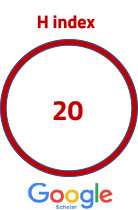| Acceptance rate | 46% |
|---|---|
| Time to first decision | 6 months* |
| Time to decision with review | 50 days* |
*Approximate number of days
**The days mentioned above are averages and do not indicate exact durations. The process may vary for each article.
ACTA Pharmaceutica Sciencia
2005 , Vol 47 , Num 2
STABILITY OF THE STEROID Δ1- DEHYDROGENATION SYSTEM OF RHODOCOCCUS SP DSM 92-344 IN ORGANIC SOLVENT WATER TWO LIQUID PHASE ENVIRONMENT
Chemistry of Natural and Microbial Products Department, National Research Center, Dokki, Cairo, Egypt
Viewed :
19025
-
Downloaded :
4944
The stability of Δ1- dehydrogenation system of Rhodococcus sp. in organic solvent aqueous two liquid phase environments has been studied. A number of water-miscible or immiscible solvents has been examined, water immiscible organic solvents have been found superior. Solvents with high log P values such as hexane, toluene gave much higher conversions. The study emphasizes that 20 % solvent concentration was favorable for an increase in productivity which results from an increase in the accumulation of product (prednisolone) in using both n-hexane and toluene. The optimal reaction time which gave maximum conversion yield was 18 h for n-hexane and 24 h for toluene. 58 % of the added substrate (20mg/100ml) has been converted to prenisolone using n-hexane or toluene, increase substrate concentration reduced prednisolone yield which was more significant in using n-hexane as organic phase. Inoculum size displayed great effect on prednisolone yield, at high substrate concentration (80 mg/100 ml) on increasing biomass 3 fold prednisolone productivity increase from 11 to 27.7 using toluene as organic phase.
Keywords :
STEROID Δ1- DEHYDROGENATION, RHODOCOCCUS SP, ORGANIC SOLVENT, TWO LIQUID PHASE BIOCTALYSIS





